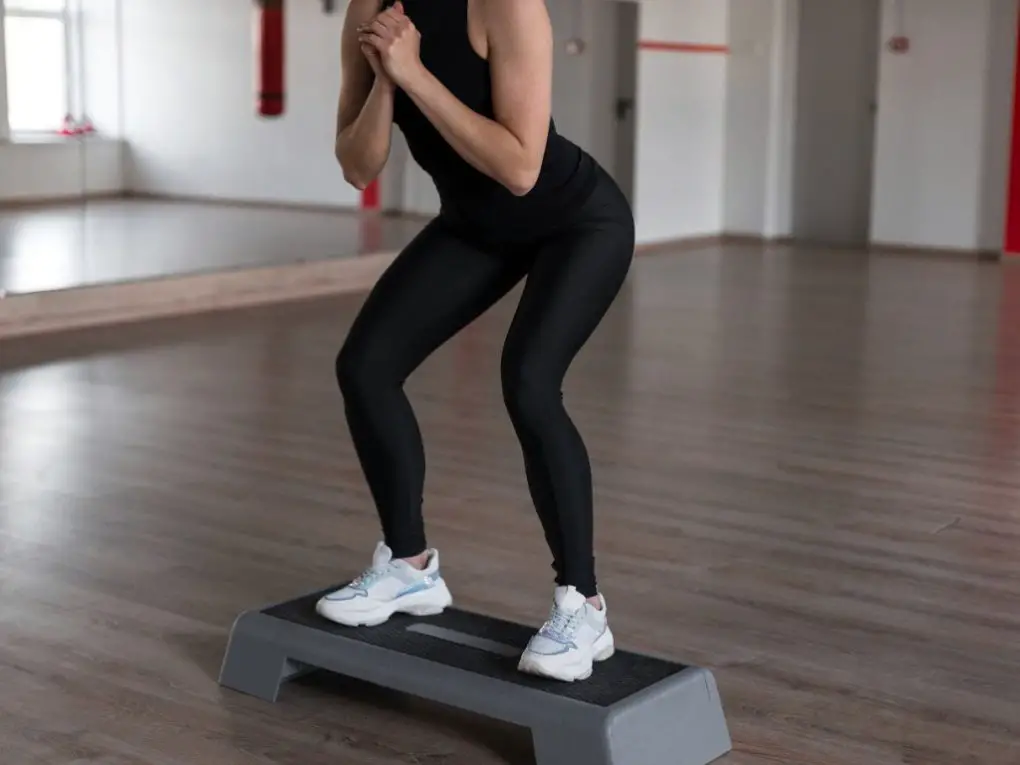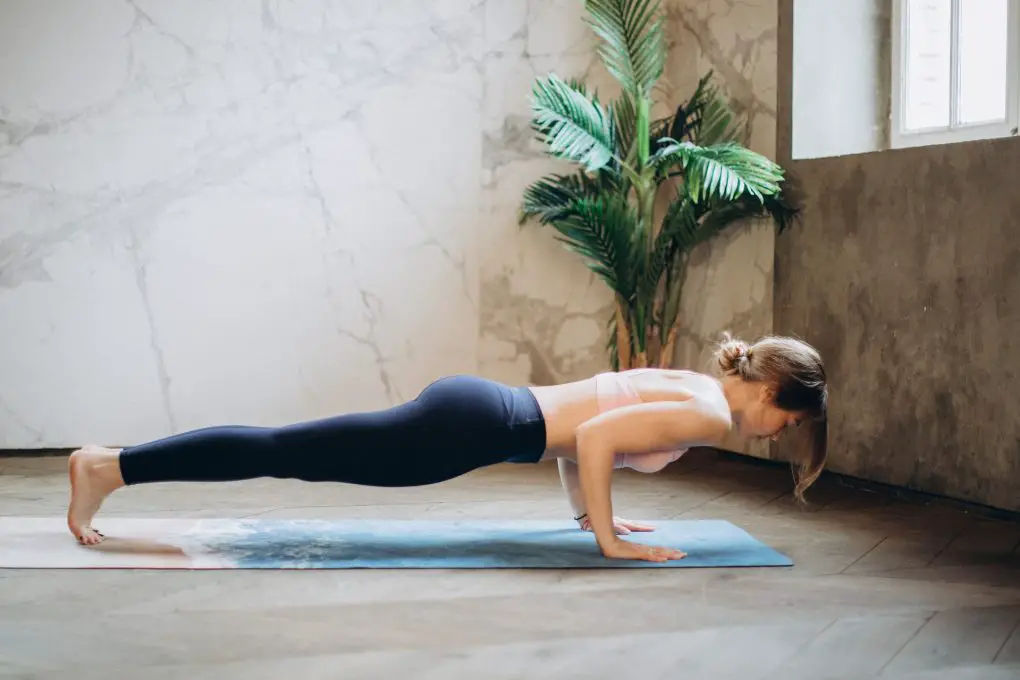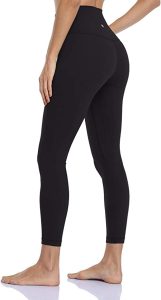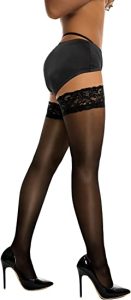Leggings vs. Tights vs. Stockings: Understanding the Differences
Leggings are typically made of thicker, stretchy material meant to be worn as pants. Conversely, tights are usually made of thinner, more sheer material and are designed to be worn under dresses or skirts. They often have feet and come in a wider range of colors and patterns than leggings. Stockings are similar to tights but are typically made of even thinner material and do not cover the hips or waist.


When deciding between leggings, tights, and stockings, it is important to consider the occasion and outfit. Leggings are a great choice for casual outfits and can be dressed up or down. Tights are perfect for more formal occasions, providing coverage and a polished look.
Stockings are ideal for special occasions or wearing a dress or skirt requiring a more sheer legwear option. Women can choose the right type for any occasion by understanding the differences between these legwear options.
Differences and Similarities Between Leggings, Tights, and Stockings
Differences
Leggings are made of thicker and more opaque materials like cotton, spandex, or nylon. Tights are made of thinner and more sheer materials like nylon or silk. Stockings are typically made of nylon or silk.
Leggings usually cover the entire leg, while tights cover the leg and foot. Stockings only cover the foot and leg up to the thigh. Additionally, leggings are often worn as pants, while tights and stockings are usually worn under clothing for warmth or style. These differences make each type of legwear suitable for different occasions and outfits.
Similarities
Stockings, tights, and leggings are all types of legwear worn on the lower half of the body, covering the legs. Stockings, tights, and leggings are typically made of stretchy, lightweight fabrics that provide a snug fit on the legs. They are commonly made from nylon, spandex, or a combination of fabrics that offer flexibility and comfort.
All three cover the legs, usually from the feet or toes up to the waist or hips, although the length may vary depending on the style and design. They are designed to provide leg coverage, making them suitable for wearing under skirts, dresses, or standalone legwear.


Stockings, tights, and leggings are all worn for functional and fashion purposes. They can provide warmth, modesty, and leg protection, especially during cooler weather. They can also enhance or complement an outfit, adding style and flair.
These three are also versatile in terms of how they can be worn. They can be paired with various types of clothing, such as dresses, skirts, shorts, or tunics, to create different styles and looks. Depending on the design, color, and thickness, they can be worn for casual, professional, or formal occasions.
Stockings, tights, and leggings typically feature an elastic waistband that helps to keep them securely in place on the waist or hips. This makes them comfortable to wear and helps prevent them from slipping down during movement.
Additionally, stockings, tights, and leggings are often used for layering. They can be worn under other clothing items to provide an additional layer of warmth, coverage, or style. They can also be layered with other legwear or worn with footwear, such as boots or heels, to create different fashion looks.
Understanding Leggings
What It Is
Leggings are skin-tight garments that cover the legs and often the waist. They are typically made of stretchy materials like spandex, nylon, or cotton blends. Leggings can be worn as a standalone garment or layered under dresses, skirts, or shorts.
Leggings are made from various materials, but the most common are spandex, nylon, and cotton blends. Spandex is a synthetic fiber known for its elasticity, durability, and ability to retain shape.
Nylon is a synthetic material that is lightweight, strong, and resistant to abrasion. Cotton blends combine cotton and spandex or nylon, offering a soft and breathable feel. Leggings come in a variety of styles, including
- Basic solid colors
- Printed patterns
- Textured fabrics like faux leather or suede
- Cropped or ankle-length
- High-waisted or low-rise
Pros and Cons
Leggings have become a popular fashion staple due to their comfort and versatility. Some pros of leggings include being comfortable and stretchy, easy to layer and style, and available in various styles and colors. They can be worn for exercise or casual wear.
However, there are also some cons to wearing leggings. It may not be appropriate for formal or professional settings. I have also seen some styles that are see-through or too thin. It may not provide enough warmth in cold weather. Additionally, it can be over-worn and become a fashion faux pas.
| Pros | Cons |
| Comfort and versatility | May not be appropriate for formal or professional setting |
| Easy to layer and style | Can be see-through or too thin |
| Variety of styles and colors | May not provide warmth in cold weather |
Buy Here:


Understanding Tights
What It Is
Tights are legwear similar to pantyhose but thicker and more opaque. Tights cover the entire leg, from the waist down to the feet, and are usually worn under dresses, skirts, or shorts to provide warmth and coverage.
They are typically made of a blend of nylon and spandex, giving them stretchy and form-fitting quality. Nylon is a synthetic fabric that is lightweight, durable, and resistant to tears and abrasions.
On the other hand, spandex is a synthetic fiber known for its elasticity and stretchiness. Combining these two materials makes tights comfortable, form-fitting, and resistant to runs and snags.
Tights come in a variety of styles, colors, and patterns. Some of the most popular styles include opaque tights, which are completely opaque and provide maximum coverage; sheer tights, which are more see-through and provide less coverage; and footless tights, which end at the ankle and are often worn with boots or sandals. Tights can have different waistbands, such as a control top, high-waisted, or low-rise.
Pros and Cons
| Pros | Cons |
| Provide warmth and coverage | Can be uncomfortable or restrictive |
| Can be worn with a variety of outfits | May be prone to runs or snags |
| Offer a range of styles and colors | May not be appropriate for all occasions or dress codes |
Tights are versatile and practical for adding warmth and coverage to an outfit. They come in various styles and colors and can be worn with dresses, skirts, shorts, or even as a layering piece under pants. However, they may only be suitable for some occasions or dress codes; some people may find them uncomfortable or restrictive.
Buy Here:


Understanding Stockings
What It Is
Stockings are a type of legwear that is designed to be form-fitting and are usually secured with suspenders or garter belts. They are made of sheer or semi-sheer material, such as nylon, silk, or lace, and are typically worn with skirts or dresses. Unlike tights or leggings, stockings do not cover the hips, waist, or buttocks.
Stockings are made from various materials, including nylon, a synthetic material that is lightweight and stretchy; silk, a natural material that is soft and smooth; lace, a delicate, decorative material often used to add a touch of elegance to stockings.
Stockings come in a variety of styles, including:
- Sheer: These stockings are made from a thin, lightweight, almost transparent material.
- Semi-sheer: These stockings are made from a slightly thicker material than sheer stockings but are still somewhat transparent.
- Opaque: These stockings are made from a thicker material that is not transparent.
- Patterned: These stockings feature a variety of patterns, such as polka dots or stripes.
- Thigh-high: These stockings are designed to cover only the legs up to the thigh and are usually held with a garter belt or adhesive strips.
Buy Here:


Pros and Cons
Some pros and cons of wearing stockings include the following:
| Pros | Cons |
| Can add a touch of elegance to an outfit | May not be as warm as tights or leggings in cold weather |
| Can be more comfortable than tights or leggings, as they do not have a waistband that can dig in | May require a garter belt or adhesive strips to stay up |
| Can be more breathable than tights or leggings, as they do not cover the hips or waist | May be more prone to runs or snags than tights or leggings |
